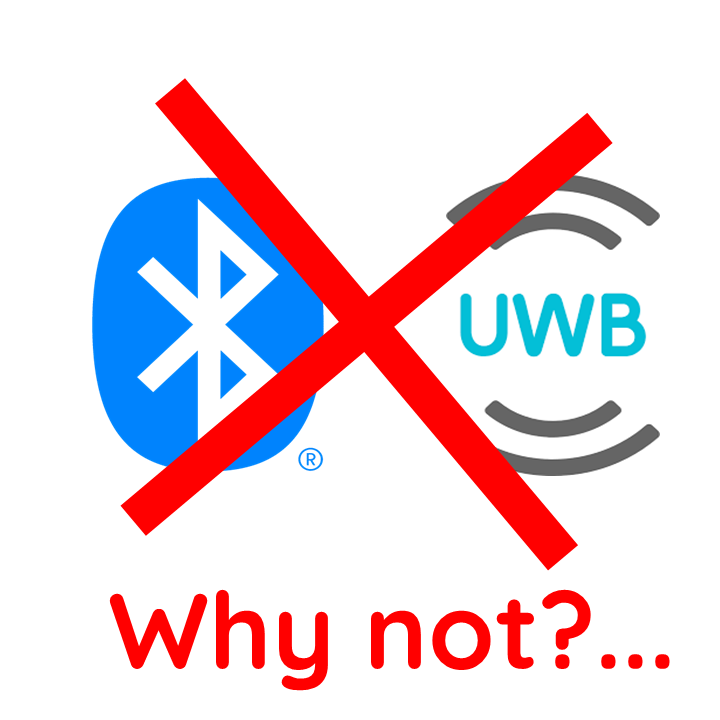When UWB and BLE are not good for positioning and why
A potential customer of ours in sports tracking – they do many sports, but we discussed cyclists – said that they tried BLE, and it was not suitable for their needs. OK. That is pretty easy and clear: thousands of spectators are all using Bluetooth and WiFi. The 2.4 GHz and 5.6 GHz bands are overcrowded for something timely as precise tracking with low latency simply cannot work. Understood.
Then, they discussed their needs with UWB manufacturers, and UWB wasn’t suitable as well. That surprised me … Why not UWB?…

If BLE is not good, why not UWB?
There are a few flavors of UWB. The most common ones are:
– TWR would be too slow for 15-30 cyclists because in TWR, you range to a single tag, and the rest are waiting. Then, you repeat with the others. In short, the update rate would be too slow for 15-30 fast-moving cyclists. Clear. ruled out
– But TDoA requires pretty complex wiring for synchronization, which is simply infeasible in sports events
Hm… That is unexpected… well, it is trivial, but still. We are focusing on accuracy, update rate, price, size, etc. But then – oops, and complex wiring for synchronization and the whole system is out of the question. Surprise, surprise…
Luckily, we are relying on the radio for synchronization. We don’t need any wires. The stationary beacons (about 16-18 pcs) shall be installed around the track; each cyclist has a mobile beacon under the saddle, and that is it – you receive a stream of precise location updates from the mobile beacons. If you want the highest update rate of 10Hz or so per cyclist, then you add more modems to cope with the radio traffic.
Summary
There are many factors that impact the selection of the indoor positioning system. Some factors – like price, size, or accuracy – are pretty obvious. Some other factors, for example, the complexity of the synchronization for TDoA for UWB or overcrowded BLE bands are not so obvious but crucially important to have a functioning indoor positioning system in real life.
More on the subject:
Random post
Categories
Tags
| M | T | W | T | F | S | S |
|---|---|---|---|---|---|---|
| 1 | 2 | 3 | 4 | 5 | ||
| 6 | 7 | 8 | 9 | 10 | 11 | 12 |
| 13 | 14 | 15 | 16 | 17 | 18 | 19 |
| 20 | 21 | 22 | 23 | 24 | 25 | 26 |
| 27 | 28 | 29 | 30 | 31 | ||